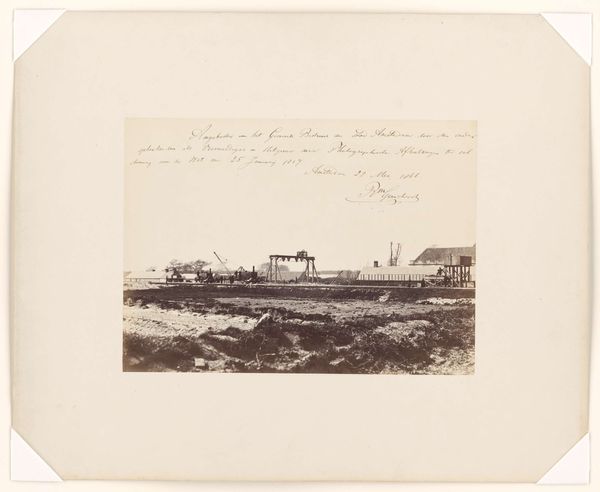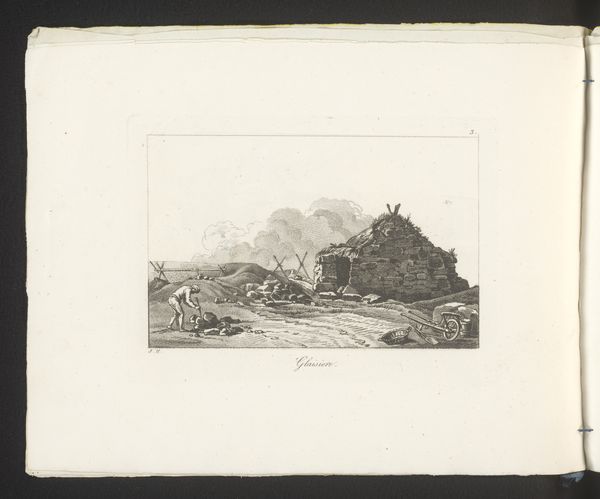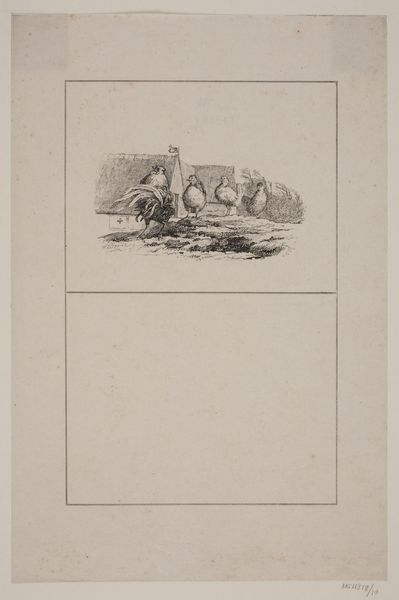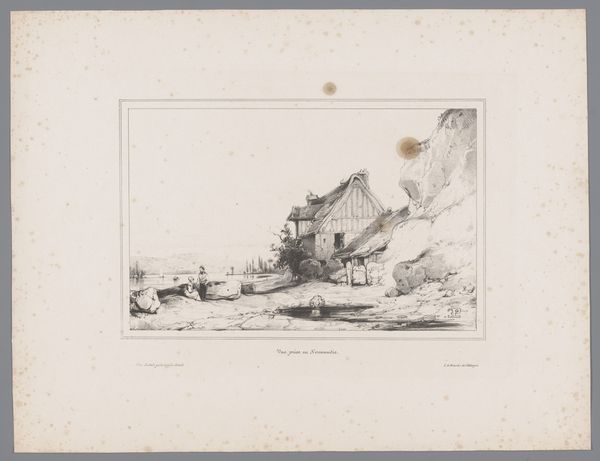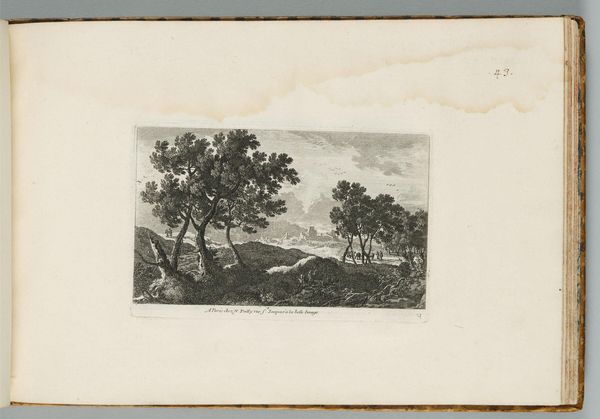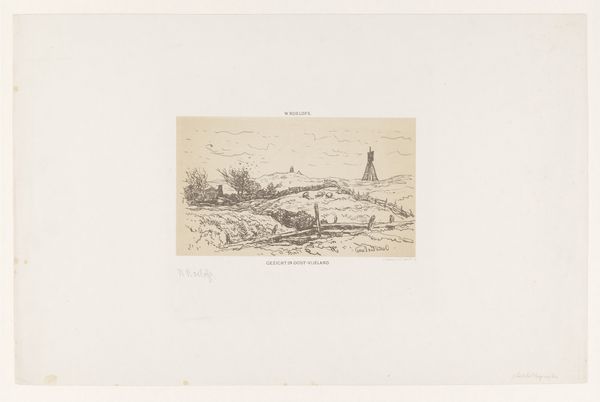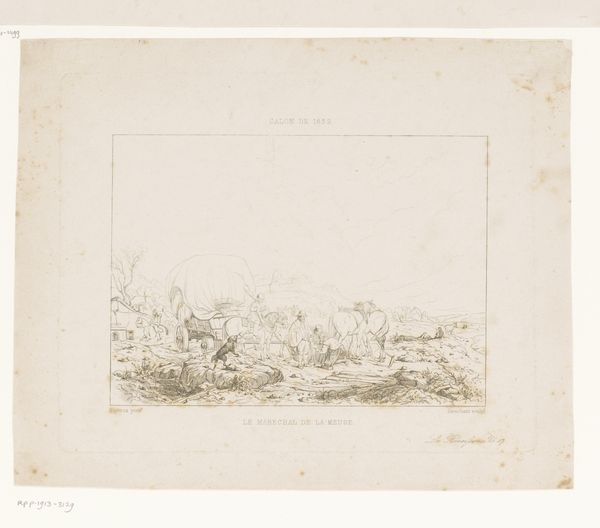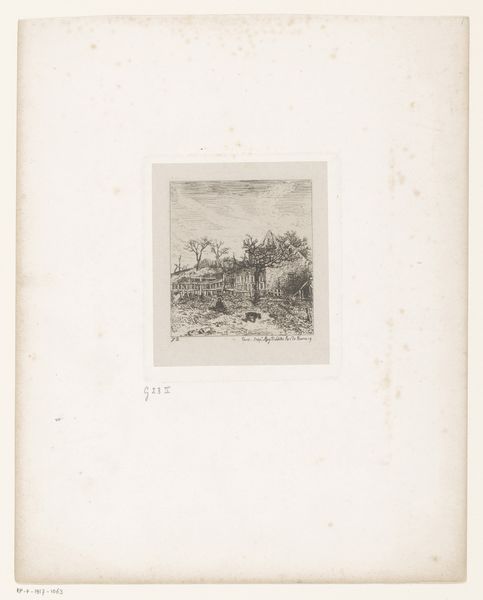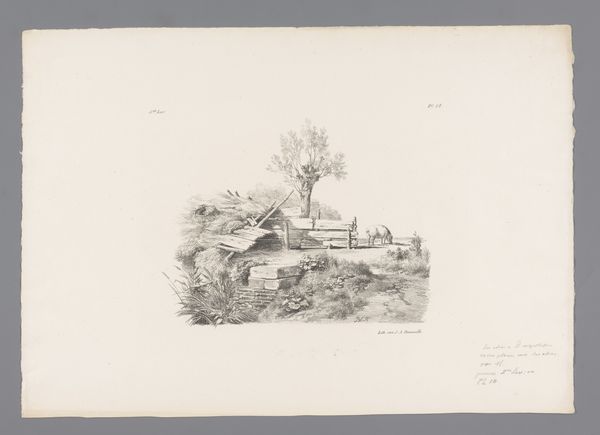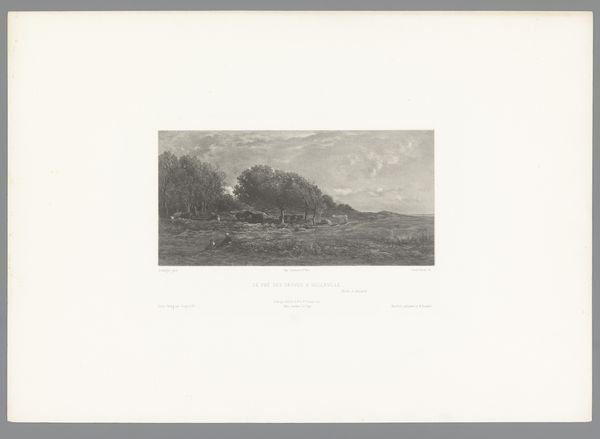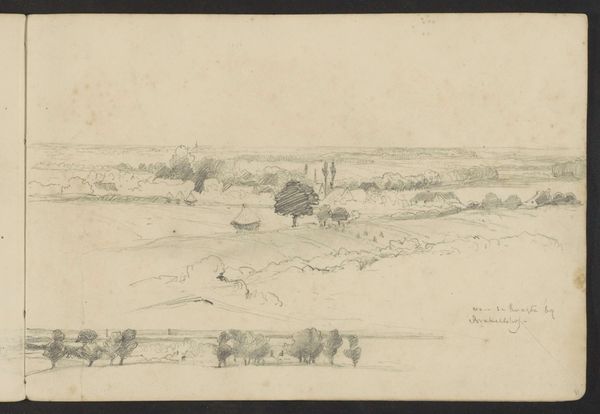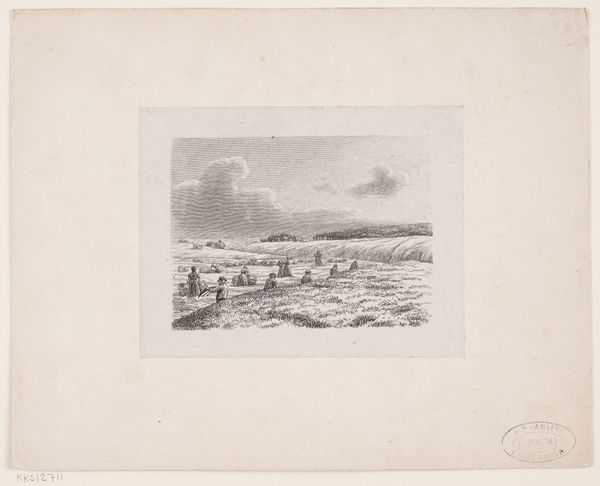
Monument opgericht na het vertrek van de Britse en Russische troepen in 1799 1837
0:00
0:00
drawing, pencil
#
pencil drawn
#
drawing
#
neoclacissism
#
light pencil work
#
landscape
#
pencil
#
pencil work
#
realism
Dimensions: height 173 mm, width 224 mm, height 86 mm, width 245 mm
Copyright: Rijks Museum: Open Domain
Editor: So, this drawing, "Monument opgericht na het vertrek van de Britse en Russische troepen in 1799," was made in 1837 by Arnoldus Johannes Eymer, using pencil. It's a pretty stark landscape; the monument dominates, but the sketchy lines give it a dreamlike quality. What do you see in this piece? Curator: Ah, yes, a monument to absence. Isn't it curious how something built to commemorate victory ends up feeling so…lonely? I see a vast, almost melancholic landscape. The monument itself, a Neoclassical structure, stands defiantly, yet the delicate pencil strokes suggest impermanence. Like a whisper of what was, fading into time. It's like Eymer is not celebrating triumph, but reflecting on what's left behind – an echo, perhaps, of a tumultuous period. The seemingly mundane depiction, devoid of bombast, really heightens the human element of the situation, doesn't it? Editor: That's interesting, "monument to absence." I was focused on the historical context, but you're right, there's a real sense of quietude. The light pencil work gives it a fleeting quality. Is it meant to feel incomplete? Curator: Perhaps not incomplete, but certainly not finished, either. Like the story itself is ongoing, beyond just victory and defeat. It exists in a liminal space. What do you think? Is there a human element there? Is it more to do with the political, and the story around this landmark, that he wants to make present? Editor: I do see the political element, the event. And I agree. Focusing on its "unfinished" and ephemeral nature is more reflective of this ongoing historical interpretation...it also makes the landmark very personable, I think! Curator: Absolutely, the landmark isn't just an inert stone marker; it’s a testament to the past shaping an evolving narrative! Editor: Well, I definitely see this work with a completely different, more thoughtful eye now! Curator: It is quite rewarding, unearthing the stories tucked away within pencil lines!
Comments
No comments
Be the first to comment and join the conversation on the ultimate creative platform.
